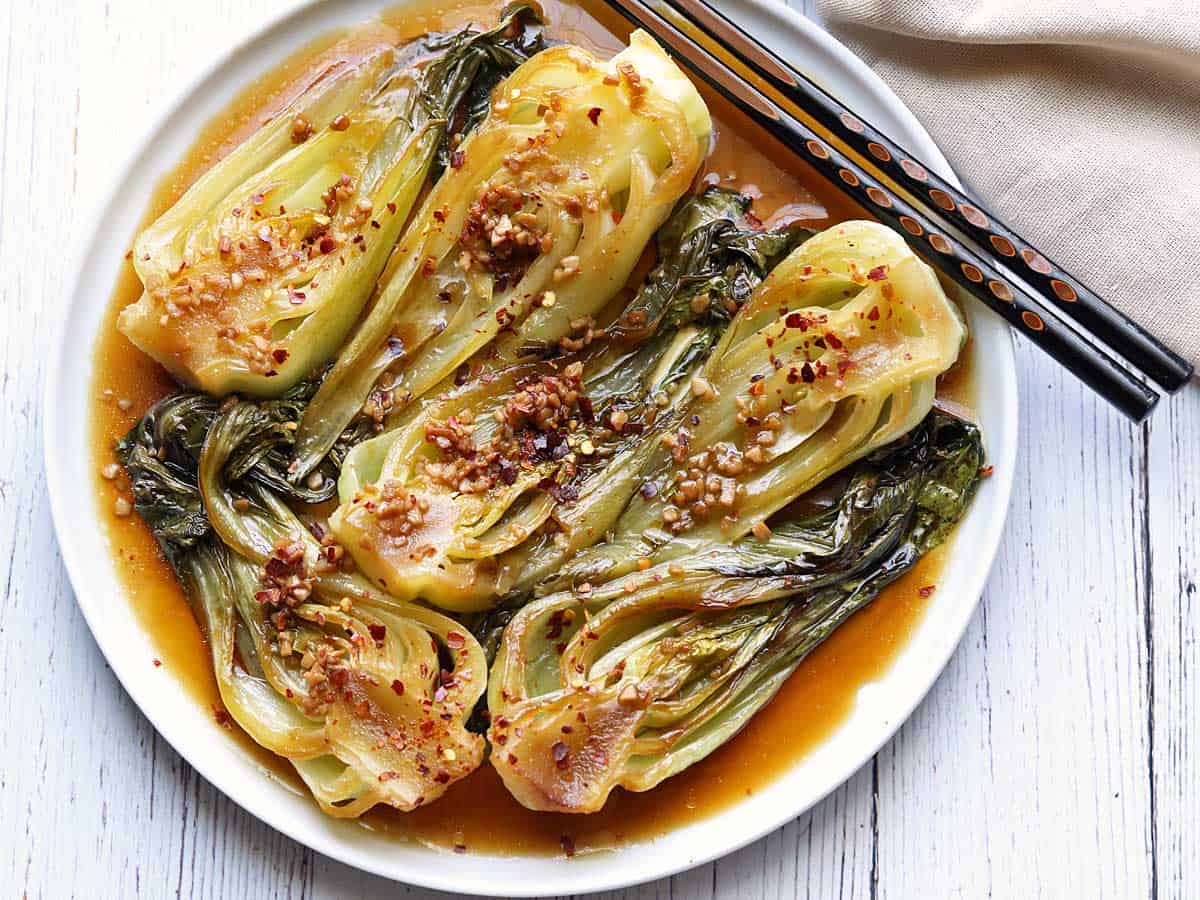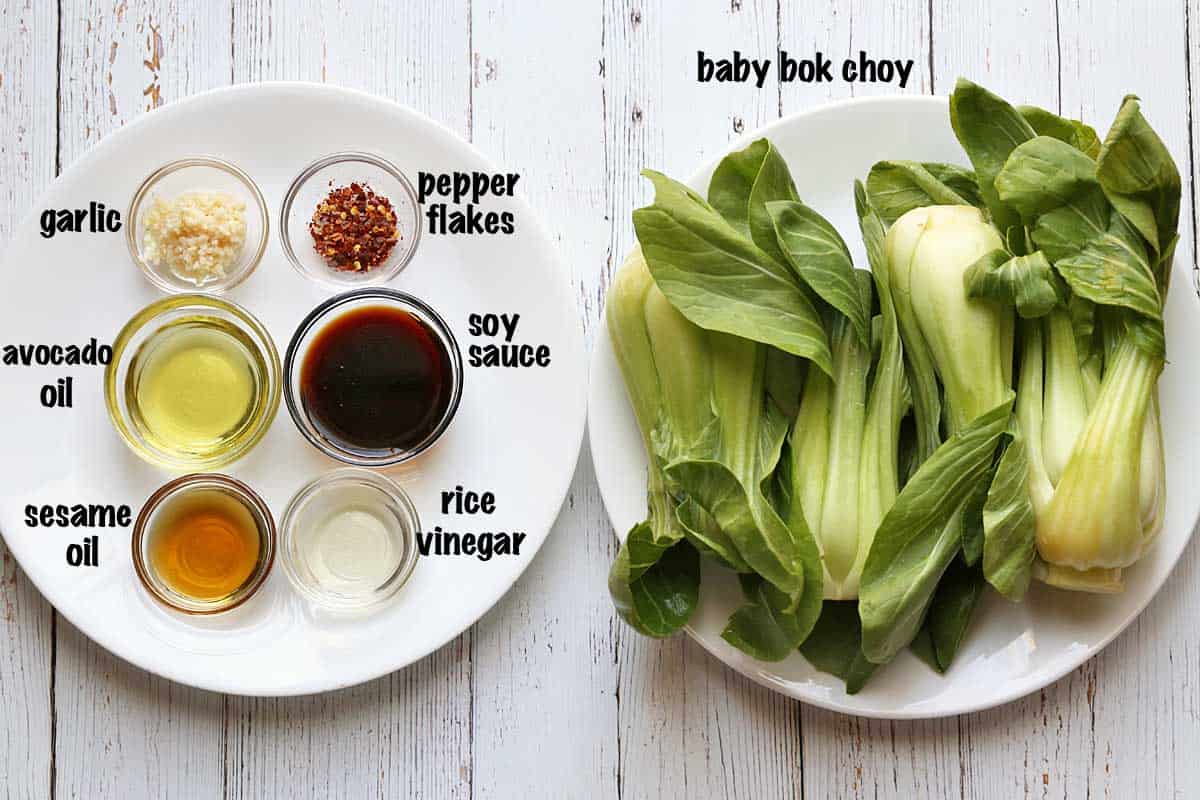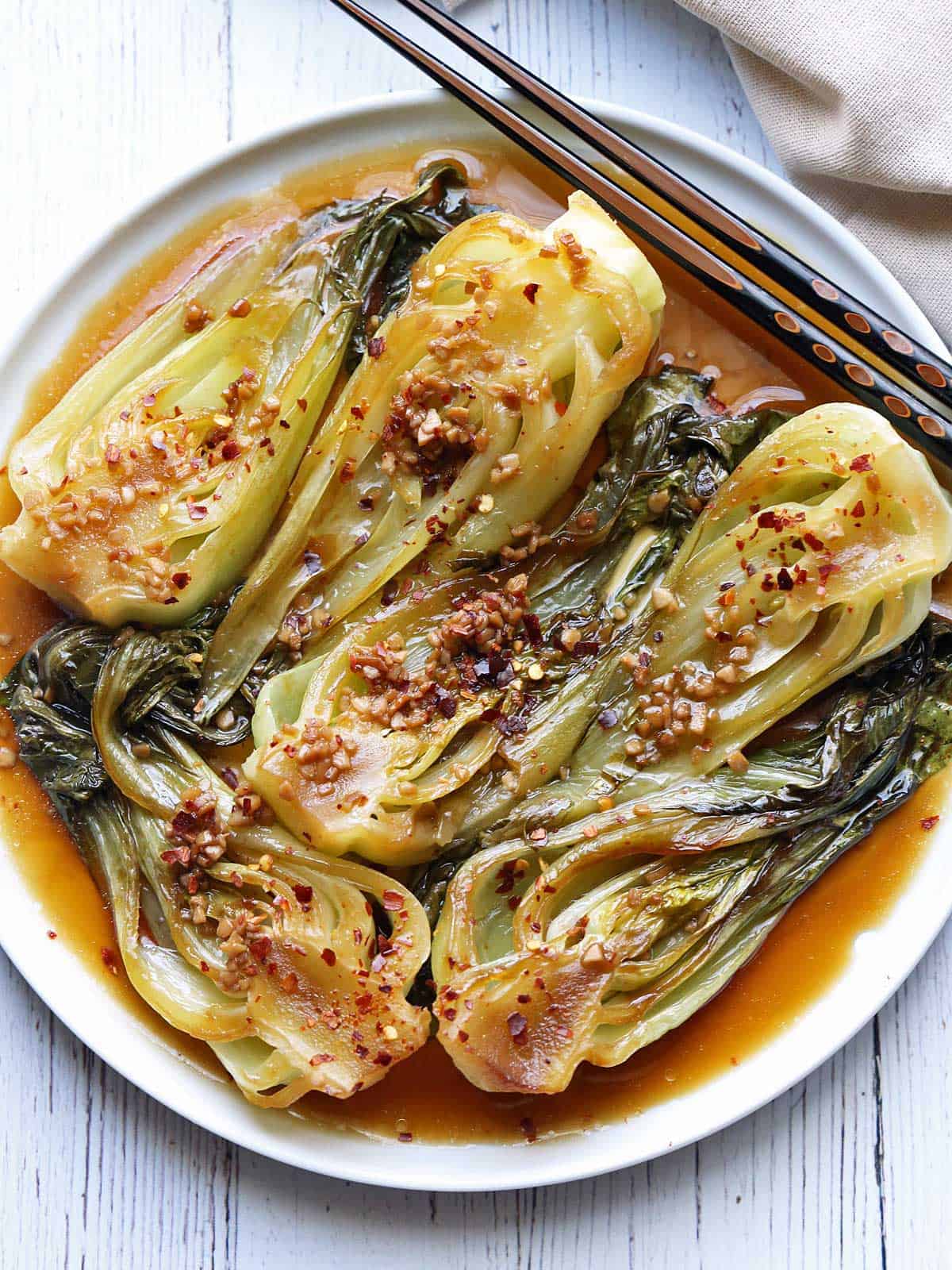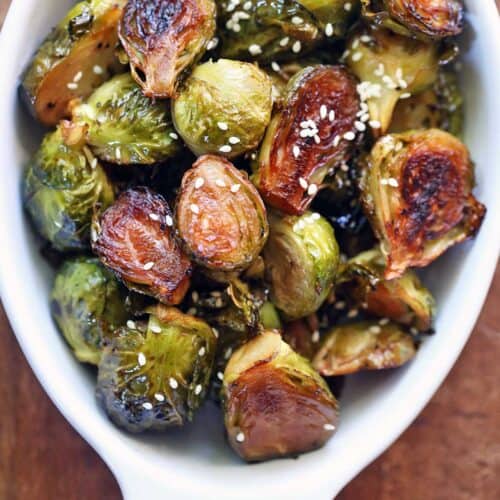Cooked in garlic and flavored with soy sauce and sesame oil, it’s a wonderful Asian-style side dish that everyone loves. I love cabbage, whether green, purple, or Chinese. I have quite a few cabbage recipes on this website, including a hearty cabbage casserole that I make regularly. But this is definitely one of my favorites. Sauteed bok choy is so flavorful and it makes such a lovely addition to any Asian-style dinner. The flavorings used here - garlic, soy sauce, and sesame oil, are magnificent. And the fact that it’s a truly quick, 15-minute recipe is a nice bonus!
Ingredients
You’ll only need a few simple ingredients to make this recipe. The exact measurements are listed in the recipe card below. Here’s an overview of what you’ll need: Baby bok choy: I get it at my local supermarket or at Whole Foods. It used to be harder to locate in the past. Now I see it everywhere. Avocado oil: This oil has a neutral taste and high smoke point and is very suitable for high-heat cooking. Fresh minced garlic: You can mince it yourself, or use the stuff that comes in a jar. Both work. I don’t recommend using garlic powder in this particular recipe. Soy sauce: I use reduced-sodium soy sauce in most of my recipes. I find that traditional soy sauce is too salty. Obviously, you can also use a gluten-free alternative. Rice vinegar: I don’t recommend using white vinegar in this recipe. It’s too acidic. If you don’t have rice vinegar, you can use white wine vinegar or simply add water. Sesame oil: I love drizzling it on top of the finished dish. It greatly enhances its flavor. Red pepper flakes: They add a hint of spice and nice color to the dish.
Instructions
Cooking bok choy is easy! Scroll down to the recipe card for detailed instructions. Here are the basic steps: You start by cleaning the Chinese cabbage and drying it. Then cut it lengthwise, as shown in the video below. Now, heat some avocado oil in a large skillet. It needs to be at least 12-inch to accommodate the cabbage. Briefly cook some garlic in the oil, then add the cabbage - place the pieces in the skillet cut side down in a single layer. Drizzle soy sauce and rice vinegar on top, cover, and cook until the cores are fork-tender (can be easily pierced with a fork), 3-5 minutes. That’s it! Now all you need to do is transfer the cooked vegetable to a serving platter. Make sure to pour the cooking liquids from the pan on top. Drizzle it with sesame oil for extra flavor, sprinkle with red pepper flakes, and serve.
Expert tip
There’s no need to add salt to this dish. The soy sauce adds plenty of saltiness. Although if you use a gluten-free soy sauce alternative, you might need to adjust the seasoning accordingly. Simply taste and decide for yourself.
Frequently asked questions
Variations
I love this recipe as is and almost always make it as written. But in case you’d like to vary the basic recipe, here are a couple of ideas for you:
Add a teaspoon of grated fresh ginger in addition to the garlic. You can add both of them at the same time.Instead of red pepper flakes, add a tablespoon of hot pepper sauce when you add the soy sauce and rice vinegar. Just remember that cooking pepper sauce can create fumes that some people are sensitive to.
Serving suggestions
This side dish goes with anything, really. It’s very versatile. But obviously, any Asian-style main dish will go particularly well with this recipe. So I most often serve it alongside soy sauce chicken or with these Asian meatballs.
Storing leftovers
Related recipes
👩🏻🍳 I typically publish a new or an updated recipe once a week. Want these recipes in your inbox? Subscribe! You can unsubscribe at any time. Much like roasted cabbage, this is one of those recipes where the leftovers taste really good, even on the fourth day.
Recipe card
❤️ Let’s connect! Follow me on Pinterest, Facebook, TikTok, YouTube, Instagram, or Twitter.














